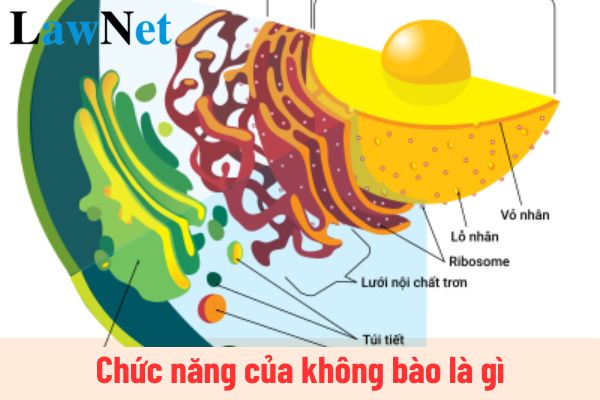What are the functions of vacuoles? In Vietnam, what is the grade at which the Biology curriculum covers the functions of vacuoles?
What are the functions of vacuoles?
Vacuole is an important organelle within the cell, especially in plant cells. The main functions of the vacuole are diverse and depend on the type of cell and the developmental stage of the organism. Below are some primary functions of the vacuole:
Storage: Nutrients: Vacuoles store reserve nutrients such as sugars, starches, and proteins to provide energy for the cell when needed.
Pigments: In some flowers, vacuoles contain pigments that produce vibrant colors, attracting pollinating insects.
Waste: Vacuoles also store waste products from metabolic processes, helping the cell eliminate unnecessary substances.
Regulating osmotic pressure and maintaining rigidity: In plants, vacuoles containing a large amount of water create osmotic pressure, which helps maintain rigidity for the cell and plant organs.
Adjusting cell size: As the cell absorbs water, the vacuole swells and increases the cell size. Conversely, when the cell loses water, the vacuole shrinks, reducing the cell size.
Digestion: Decomposing waste: Some vacuoles contain hydrolytic enzymes that help decompose waste within the cell.
Protection: Storing toxic substances: Vacuoles may contain toxic substances to protect the cell from harmful environmental agents.
Regulating pH: Vacuoles help regulate the pH within the cell, maintaining a suitable environment for life activities.
*Note: The information on the functions of vacuoles is for reference purposes only./.

What are the functions of vacuoles? In Vietnam, what is the grade at which the Biology curriculum covers the functions of vacuoles? (Image from the Internet)
In Vietnam, what is the grade at which the Biology curriculum covers the functions of vacuoles?
Under Section 5 of the Appendix on General Education Program in Biology issued together with Circular 32/2018/TT-BGDDT, the requirements for the 10th-grade Biology curriculum are as follows:
Cell Biology
...
- Describe the size, structure, and functions of prokaryotic cell components.
- Analyze the appropriate relationship between the structure and function of the cell wall (in plant cells) and the plasma membrane.
- Describe the structure and function of the cytoplasm.
- Present the structure of the cell nucleus and the important functions of the nucleus.
- Analyze the relationship between the structure and function of organelles within the cell.
- Observe drawings and create a comparison table of the structure between plant and animal cells.
- Create a comparison table of prokaryotic and eukaryotic cells.
- Practice preparing specimens and observe prokaryotic cells (bacteria).
- Prepare microscopic specimens of eukaryotic cells (onion, purple spiderwort, rice flower, pumpkin, oral mucosa epithelium cells,...) and observe the nucleus, some organelles on those specimens.
Therefore, according to the above regulation, in the Biology curriculum, students will learn about the structure and function of the cytoplasm, present the structure of the cell nucleus and its important functions, and analyze the relationship between the structure and function of cell organelles...
Thus, the 10th-grade Biology curriculum shall cover the functions of vacuoles.
What are the core educational contents of the 10th-grade Biology curriculum in Vietnam?
Under Section 5 of the Appendix on General Education Program in Biology issued together with Circular 32/2018/TT-BGDDT, the core educational contents of the 10th-grade Biology curriculum in Vietnam include:
Introduction to the general biology curriculum
- Subject and areas of biological study
- Objectives and roles of the Biology subject
- Biology in the future
- Occupations related to biology
Biology and sustainable development
- Sustainable development of the natural environment
- Social development: bioethics; economy; technology
Research and learning methods in Biology
- Research methods
- Materials and equipment
- Process skills
General introduction to living world organizational levels
- Concepts and characteristics of living organizational levels
- Levels of living organization
- Relationships between living organizational levels
Cell Biology
- Overview of cells
- Chemical components of cells
- Cell structure
- Metabolism and energy transformation in cells
- Cellular information
- Cell cycle and division
- Cellular technology and some achievements
- Enzyme technology and applications
Microbiology and virology
- Concepts and groups of microorganisms
- Microorganism research methods
- Synthesis and degradation processes in microorganisms
- Growth and reproduction in microorganisms
- Some practical microorganism applications
- Viruses and applications

